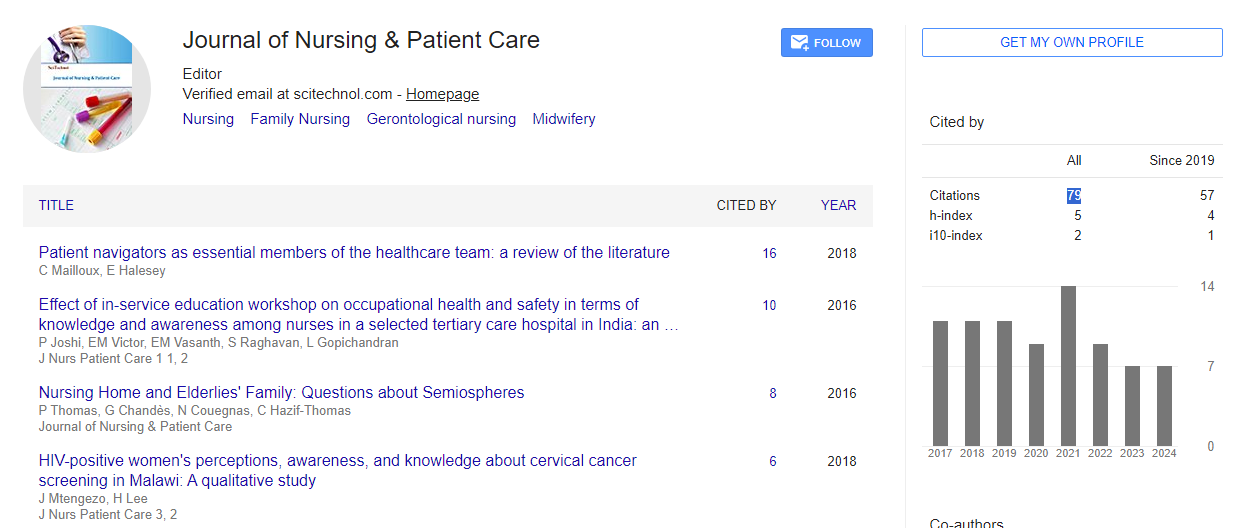Evaluation of a low cost model for the delivery of therapeutic moderate hypothermia in neonates with moderate to severe encephalopathy secondary to perinatal asphyxia
Vinit Wankhede
Government Medical College and Hospital, India
: J Nurs Patient Care
Abstract
Introduction: Pilot studies and results of a meta-analysis of randomized controlled trials in neonates with ischemic encephalopathy have reported that therapeutic hypothermia decreases the mortality and improves the neurological outcome of neonates with perinatal asphyxia. However as servo controlled equipment to deliver therapeutic hypothermia is extremely expensive, we assessed the low-cost delivery method using cool packs. We also studied the problems and complications associated with this technique of maintaining sustained hypothermia. Materials and methods: This was a prospective observational study conducted at NICU after ethical committee clearance. Inclusion criteria were 1.Gestational age > 36wks, 2.Birth weight > 2 kg, 3.Age < 6 hours, 4. Documented moderate to severe birth asphyxia defined in the study protocol. After obtaining informed consent from the parents, the neonates underwent cooling by using ice packs. The core temperature of the baby was recorded by inserting an oesophageal probe. All supportive management was started as per our NICU protocol. The core temperature of the neonates was monitored serially till the total period of 84 hours. Serial laboratories were obtained at the time specified by the protocol. After 72 hrs, the neonates were rewarmed slowly to a normal core temperature by 0.5°C every hour. Thereafter detailed daily examination was noted till discharge. Results: Of 32 neonates admitted with perinatal asphyxia in1 year study period, only 6 were eligible for therapeutic hypothermia. The mean time taken to achieve target oesophageal temperature in 6 patients who underwent therapeutic hypothermia was 90 minutes. Mean oesophageal temperature was 33.75˚C and could be maintained for 72 hours with the use of cool packs. Rewarming phase took mean of 6 hours 45 min± 55min. Adverse events observed during cooling were sepsis, coagulopathy, hyponatremia, hypotension and abnormal renal function. Conclusion: We have demonstrated that it is feasible to deliver therapeutic hypothermia using a low-cost model of room temperature modulation and ice packs in resource-limited settings. However, the adverse events may limit its use in resourcelimited settings
Biography
Vinit Wankhede is a Consultant Pediatric Neurologist and Epileptology’s, currently practicing in Nagpur City in the state of Maharashtra, India. He has done his MBBS from Government Medical College and Hospital, Nagpur. He completed his DCH from BJ Medical College, Pune and DNB from Choithram Hospital & Research Centre, Indore. He underwent fellowship training in Pediatric Neurology & epilepsy at Bharati Hospital & Research Centre, Pune. He received honors and gold medals in his master's educations from Maharashtra University of Health Sciences and also from Neurology chapter of Indian Academy of Pediatrics for 1st rank in India. Currently, he is editor of the Indian Journal of pediatric neurology and has organized various Pediatric Neurology seminars, workshops, and conferences.
E-mail: docvinpaeds@gmail.com
 Spanish
Spanish  Chinese
Chinese  Russian
Russian  German
German  French
French  Japanese
Japanese  Portuguese
Portuguese  Hindi
Hindi 